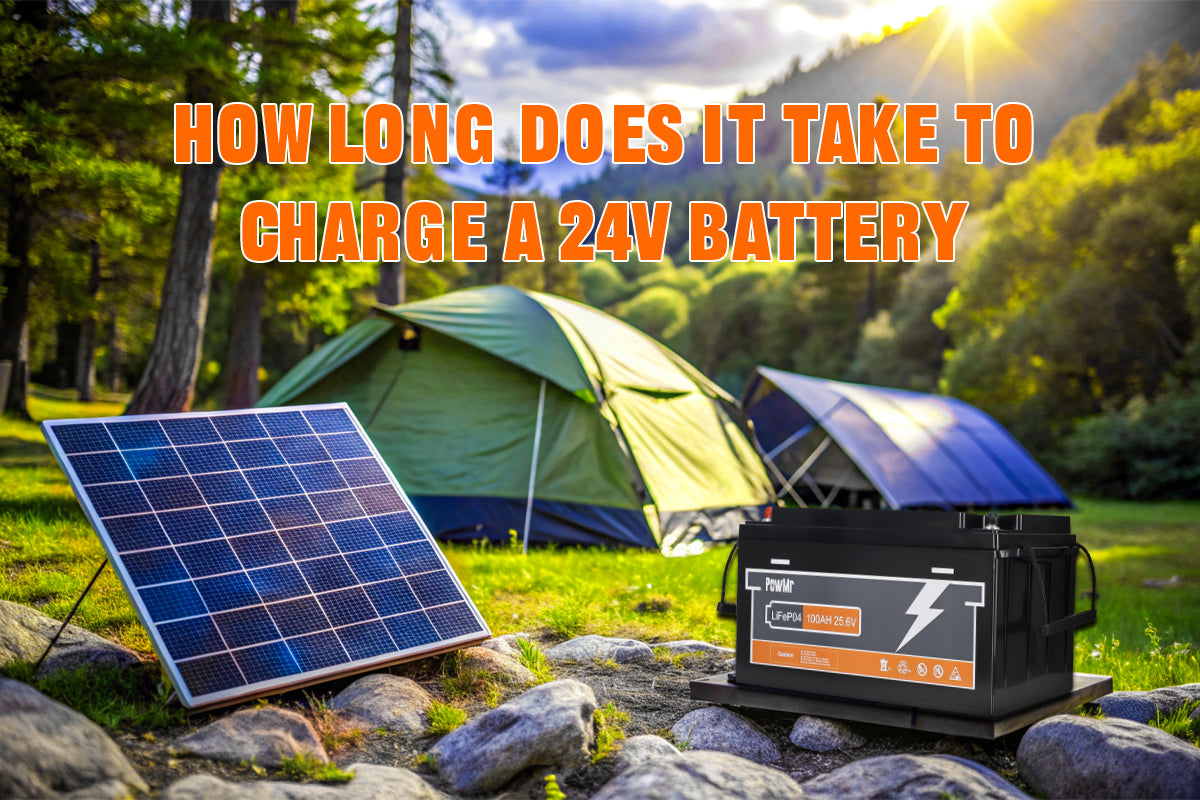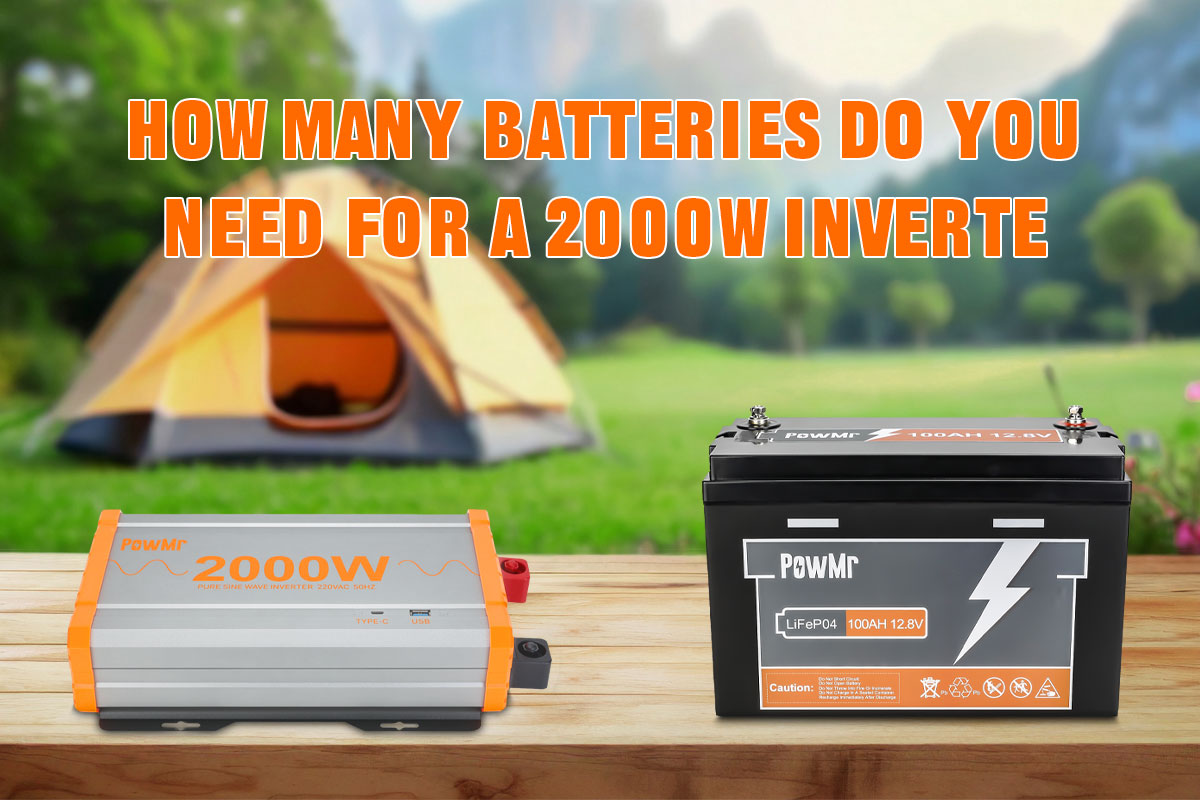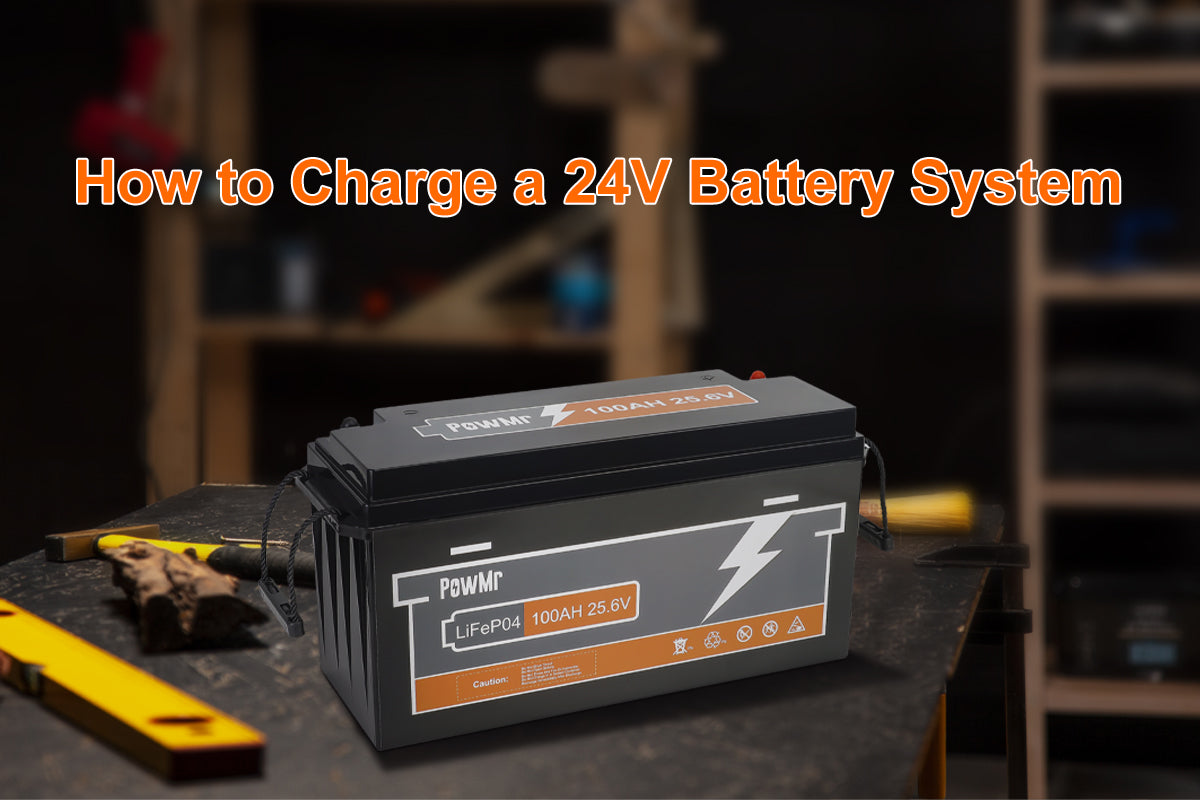When it comes to solar energy systems or off-grid living, understanding how long it takes to charge a 24V battery is crucial for optimizing energy use. Whether you're relying on solar charge controller, or traditional grid charger, the time it takes to fully charge your battery depends on several factors.
In this guide, we’ll explore the key elements that affect charging time and provide a practical example, so you can plan your energy storage needs more effectively.
Key Factors That Affect How Long It Takes to Charge a 24V Battery
There are several factors that directly impact how long it takes to charge your 24V battery. Let’s look at the most important ones:
1. Battery Capacity
The capacity of a 24V battery is measured in amp-hours (Ah). The higher the capacity, the longer it will take to charge. For example, a 100Ah battery can store more energy than a 50Ah battery, requiring more time to charge fully.
2. Charging Current
The charging time is also influenced by the current provided by the charger/charge controller. A higher current (measured in amps) will result in faster charging.
However, it’s essential to use a charge controller that’s compatible with your battery to avoid damaging it.
Related Article:
If your battery is near empty (a low state of charge), it will take longer to charge compared to when it is partially charged. Most lithium batteries, like the PowMr lithium battery, can be charged more efficiently from about 20% to 80% state of charge.
4. Battery Type
The type of battery you’re using (lithium vs. lead-acid) also plays a significant role. Lithium batteries typically charge faster and last longer than traditional lead-acid batteries due to their higher charge efficiency.
Step-by-Step Guide to Calculate Charging Time for a 24V Battery
To calculate how long it would take to fully charge a PowMr 100Ah 24V lithium battery, we’ll walk through the process in detail. This calculation assumes a complete charge from 0% to 100%.
Step 1 - Determine Battery Capacity
Battery capacity is typically measured in amp-hours (Ah), which represents the amount of energy it can hold. In this example, the PowMr battery has a capacity of 100Ah. To convert this to watt-hours (Wh), we multiply the amp-hour rating by the voltage:
- Battery Capacity (Wh) = Voltage (V) × Capacity (Ah) = 24V×100Ah = 2400 Wh
So, the PowMr 100Ah 24V battery can store up to 2400Wh of energy. This figure will help us calculate the approximate time required to fully charge the battery.
If you connect two of these batteries in parallel, the combined capacity doubles to 200Ah. Multiplying 24V by 200Ah gives us 4800Wh, allowing for double the energy storage.
Related Article:
Wiring Batteries in Series vs Parallel in Solar Power System
Step 2 - Choose charge controller output (Amp)
Choosing the correct charge controller amperage is important for safe and efficient charging. The charge controller’s output amperage determines how quickly the battery can be charged without overheating or causing damage.
Battery specifications often provide a recommended charging current as well as a maximum limit for safe operation. Higher amperage results in a faster charge, while a lower current would take longer.
For the PowMr 24V 100Ah battery, the recommended charging current is 20A, while the maximum allowable current is 100A.
Let’s assume a solar charge controller rated at 20 amps, we can calculate the charge controller’s power output in watts:
- Charge Controller Output (Watts)= Battery Voltage(V) × Controller Rated Current = 24V×20A=480 watts
If you connect two batteries in parallel (for a total of 200Ah), the recommended charging current would ideally double to 40A if you want to maintain the same charging time as a single battery.
Recomendation
Consider the PowMr POW-M60-ULTRA 60A Solar Charge Controller for efficient solar charging of 24V battery. It supports up to 1440W of solar input and has an MPPT voltage range of 37V–105V.
With an adjustable charging current from 2A to 60A, this controller offers excellent flexibility and efficiency for managing different battery types and charging speeds.
Step 3 - Calculate Basic Charging Time
With both the battery capacity and charge controller output defined, we can calculate the estimated charging time. Divide the battery’s capacity by the charger’s output to find the approximate time needed for a full charge:
- Charging Time (hours) = Battery Capacity (Wh)/Charge Controller Output (W) = 2400 Wh / 480 W =5 hours
So, with a 20A charger outputting 480 watts, it would take approximately 5 hours to charge the 100Ah 24V battery from 0% to 100%.
For the 200Ah battery group with a capacity of 4800Wh, if the charging current remains the same(20 amps), the charging time will double, taking approximately 10 hours to reach full capacity.
FAQs: Charging a 24V Battery
1. Can I Use a Lower Amp Charger to Charge My 24V Battery?
Yes, but charging will take longer. For example, if you use a 5A charger, the charging time would approximately double. Lower-amp chargers are safe but less efficient for fast charging.
2. How Long Can I Leave a 24V Battery on the Charger?
Lithium batteries should not remain on a charger indefinitely once fully charged. Smart chargers, however, switch to a float charging mode that prevents overcharging.
More Guides for Battery Charging:
The Ultimate Guide to Choose Batteries for Inverter



